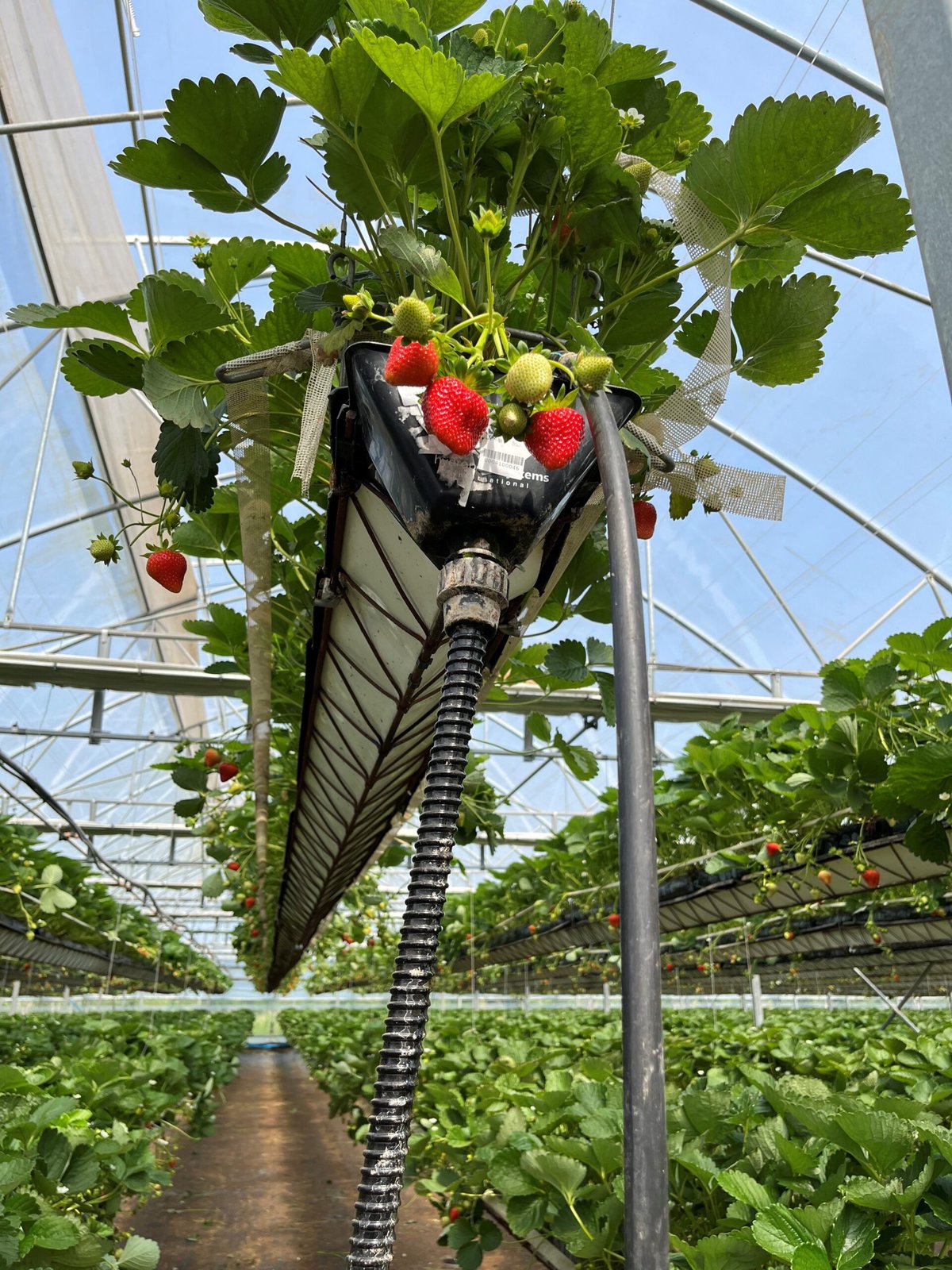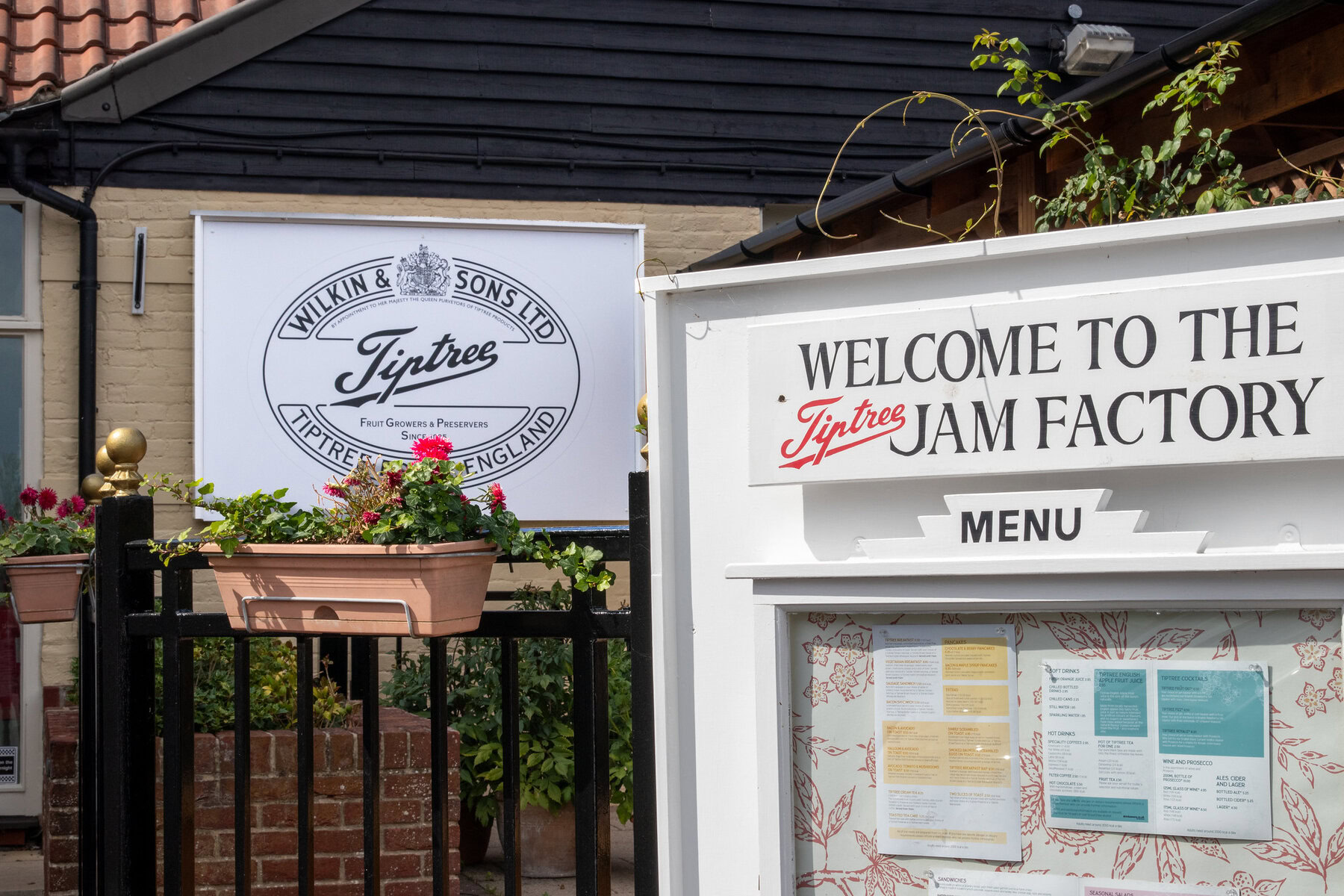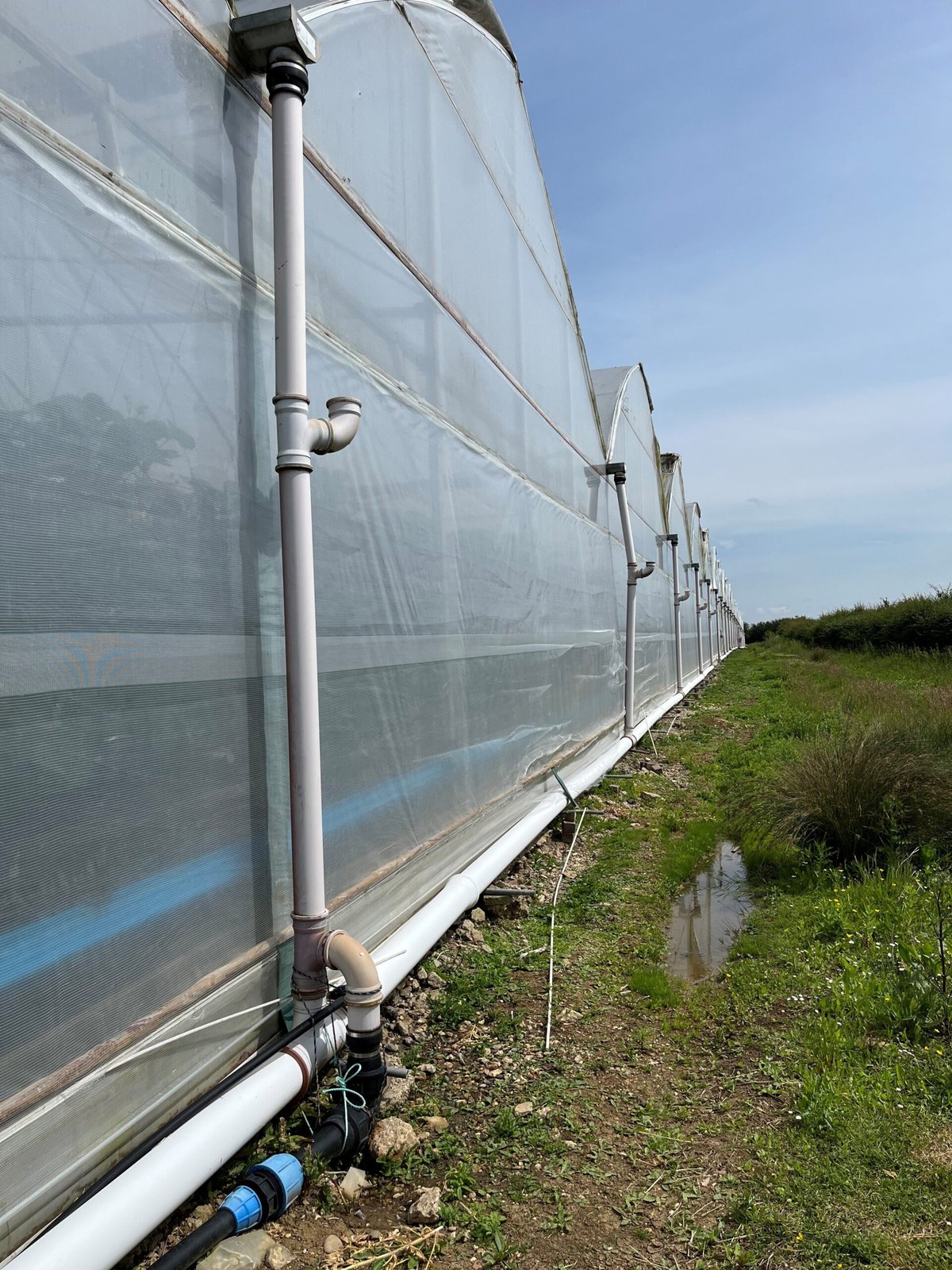Andrey Ivanov remembers 2011 and 2012 all too clearly. A drought had been declared across much of England. The spring of 2011 was named the driest in the country since 1893, followed by the region’s driest autumn since 1985.
This put a brief end to the usual complaints about the stereotypically rainy English weather. But for Ivanov, general manager of Wilkin & Sons, the farming operation known for producing the country’s most iconic fruit, this was bad news.
Ivanov had a tough decision to make. With the farm’s reservoirs running low and no rain in sight, he decided to use the remaining water supply to irrigate half the farm’s signature strawberry and raspberry crops. The other half would be sacrificed, to give the irrigated crop the best chance of being fully harvestable. The alternative would be unthinkable: continue to irrigate all crops equally, then run out of water and lose everything.
Then, on April 12, 2012, “the heavens opened,” Ivanov recalls, the date clearly imprinted in his memory. The driest season on record turned into the wettest, saving all of the crop. But Ivanov didn’t want the farm to reach such a crisis point again, so he began looking for solutions — and realized the answer had been above his head, and on the farm, all along.
Rainwater harvesting had been introduced at Wilkin & Sons on a small scale in the 1980s, by diverting rainwater traveling through the gutters from the farm’s buildings into newly built reservoirs to store it. Ivanov then expanded the process to include the roof space of all the farm’s greenhouses and polytunnels (smaller greenhouse-like structures) and built more reservoirs to increase the amount of rainwater the farm could store. Now, pipes are attached to all the gutters within the farm’s 50 acres of covered structures, so rainwater can travel to seven reservoirs across the 650 acre property, rather than being lost to the sea.

“After that scary moment we had to do something to become water resilient, and rainwater harvesting seemed like common sense,” Ivanov says. He also introduced a system for recovering and treating the water that is used to wash the harvested fruit, to be able to use it again for irrigation. Condensation from the greenhouses’ external walls is also captured and reused.
Today, all seven reservoirs are full, holding 125 million liters of water, the equivalent of around 50 Olympic-sized swimming pools. It’s the first time Wilkin & Sons has been fully self-sufficient when it comes to water, with no need to divert water from nearby streams and ditches (although the farm still has a license to do so; this used to be its primary water source).
There are no nearby rivers or underground water sources. The irony of the original Wilkin family choosing 200 years ago to farm fruit in what is officially England’s driest county is not lost on Ivanov. But, he acknowledges, changes in farming have led to a greater need for regular, reliable water access.
“The crops used to be outdoors, now they are undercover in greenhouses to protect them, so they don’t have direct access when it does rain,” says Ivanov.
“Our footprint in terms of growing area is much more intensive, and our harvesting season is becoming much longer, so they [previously] didn’t need as much water then as they do now.”
The transitions Ivanov describes began when Wilkin & Sons entered the fresh fruit market for the first time in 2002. It was one of the changes the Bulgarian expat introduced when he joined, not long out of his science and agricultural economics degree in his home capital, Sofia.
This saw Wilkin & Sons expand beyond its famous Tiptree jam, which it has been making since 1885. The jam has become a central part of afternoon tea served at the 10 Tiptree tea rooms and is also sold internationally.
In the greenhouses, the strawberry and raspberry plants are housed in layers of horizontal troughs. This, Ivanov explains, eliminates competition from weeds for soil nutrients and minimizes water evaporation from the ground. Ivanov also switched from overhead irrigation to a drip method, which delivers water directly to the root — a move that reduces water consumption by around 75 percent, he says. Any water runoff is also captured and reused. He has calculated that the crop currently needs about 100 liters of water per kilogram of fruit.
“You’re maintaining the plant with the minimum resources, to get the maximum out of it,” says Ivanov.
With strawberries being the biggest-selling summer item in UK supermarkets, Ivanov is now ready for a bumper crop, predicting 1,500 metric tons of strawberries will be picked by the end of the harvest. Around 70 percent will be sold as fresh fruit at farmers’ markets and supermarkets. Anything deemed not aesthetically suitable will join the 30 percent that are turned into Tiptree jam, so no fruit is wasted.
Ensuring the operation’s water security is vital, and not just for continuing the legacy of the Wilkin family. Picking the berries provides an income for the international workers who have been descending on the farm each year since the 1950s.
This year, 250 workers from countries including Bulgaria, Romania, Serbia, North Macedonia, Moldova, Ukraine, Uzbekistan, Kyrgyzstan and South Africa are staying in mobile homes on a campsite on the property. They have access to cooking and laundry facilities, Wi-Fi, plus a hall to socialize in, for a weekly fee of £69 ($88 US) that is capped by the UK government.

“I would love to staff our operation with local people, but we can’t offer full-time employment all year-round, so our international workers are really important,” says Ivanov. The worker demographic has changed, he adds. Wilkin & Sons established its work camp in the 1950s, when the UK government’s agricultural work scheme incentivized international students. The scheme ended in 2014, but was relaunched two years ago and extended to all ages. The average age is now around 40, and roughly 75 percent of workers tend to return season after season.
“We never advertise. Our motto is to look after the workers and they’ll come themselves. The whole industry is competing for the same people. If we can offer better conditions than our neighbors, they’ll come and stay with us,” says Ivanov.
Making Wilkin & Sons even more sustainable and resilient is high on Ivanov’s agenda. He recently applied for planning permission to install 25 acres of solar panels to help reduce the farm’s energy costs. In a trial plot, he is also experimenting with more drought-resistant berry varieties, and adjusting water levels to land on a minimum amount before it compromises a plant’s health, in acknowledgement — and anticipation — of the effect climate change will have on the farm.
“Business resilience is crucial for navigating the challenges posed by climate change,” says Ivanov. “By identifying and assessing the impact of climate-related risks on the business, we can implement measures to reduce our vulnerability.” This goes beyond alternative water and energy sources, he adds; it’s about integrating climate resilience into long-term planning for the farm across the board.
“We need to adapt and develop flexible strategies that can withstand climate impacts, by anticipating various climate scenarios and adjusting our business plans accordingly,” he says.
“We’re extending the typical two-to-three-year decision horizon to 10, 20, or even 50 years and recognizing that climate impacts may not be immediately visible, but will accumulate over time.”

Historical evidence shows rainwater harvesting dates back to ancient times. Farmers in India are now practicing the techniques of their ancestors, and texts documenting the practice that are thousands of years old have been found in Iran. But with water scarcity becoming a more pressing issue thanks to climate change — 2.3 billion people live in water-stressed countries, according to the UN — rainwater harvesting is seeing a global resurgence.
For example, the UN last year established the International Rainwater Harvesting Alliance, to improve water security, not just in agriculture, but for households, schools and health centers. It plans to train and certify rainwater harvesting technicians across 40 countries, while establishing policies and standards, to increase the take up globally, which the organization says is currently low. Setting up storage systems is deemed expensive, it says, but by raising awareness and sharing results from those doing it successfully, it hopes more people will understand the benefits.
In the UK, the government is now offering grants for farmers who want to transition to rainwater harvesting, while water companies are also encouraging it. The government has promised not to license the practice, provided the water is not combined with water from somewhere that does require a license, like an existing underground or surface water source.
“If farmers around the country haven’t started rainwater harvesting already, they will be doing it now,” says Ivanov.
“It’s a much more comfortable position to be in, to not worry about whether we will have enough water this year, and where we’re going to find it, if we end up in a drought again.”
The post How an Iconic Jam Maker Got Smart About Water Use appeared first on Reasons to be Cheerful.




